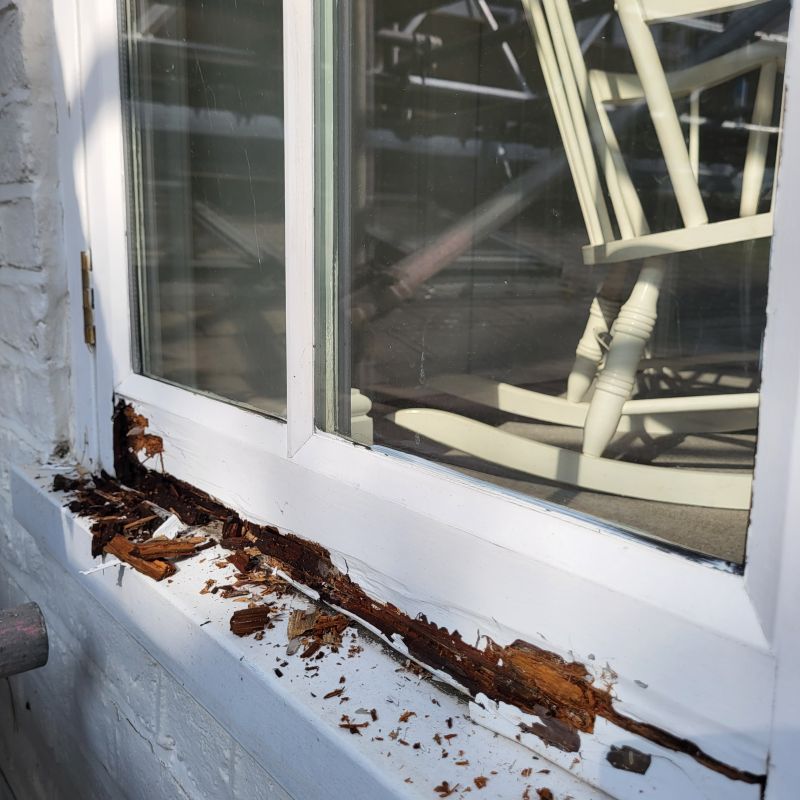Optimal Timing for Window Sill Repairs
Timing for window sill repairs depends on several factors, including weather conditions, the extent of damage, and seasonal humidity levels. Performing repairs during dry, mild weather helps ensure proper adhesion and curing of materials, reducing the risk of future issues. Typically, late spring and early fall are considered optimal periods for such work, as temperatures are moderate and moisture levels are lower.
Spring and fall offer ideal weather conditions for window sill repairs, minimizing delays caused by rain or extreme temperatures.
High humidity and rainfall can hinder the curing process of sealants and paints, making dry seasons preferable.
Severe damage may require repairs regardless of season, but timing can influence the quality and longevity of the work.
Temperatures between 50°F and 85°F are optimal for most repair materials used in window sill restoration.

A close-up of a deteriorated window sill showing rot and paint peeling.

A worker applying sealant to a window sill during a clear, mild day.

A newly repaired window sill with fresh paint and sealing.

Ways to make Window Sill Repairs work in tight or awkward layouts.

Popular materials for Window Sill Repairs and why they hold up over time.

Simple add-ons that improve Window Sill Repairs without blowing the budget.
Window sill repairs are essential for maintaining the structural integrity and appearance of windows. Timely repairs prevent further deterioration caused by moisture, rot, and pests. Properly restored window sills contribute to energy efficiency by improving insulation and preventing drafts. Statistics indicate that neglecting window sill maintenance can lead to increased repair costs, with damages often doubling if left unaddressed over time.

A window sill showing signs of water damage and decay.

Applying protective sealant to a cleaned window sill.

A freshly painted window sill after repairs.

A detailed view of the completed window sill repair.

High-end options that actually feel worth it for Window Sill Repairs.

Finishes and colors that play nicely with Window Sill Repairs.
| Season | Advantages |
|---|---|
| Spring | Moderate temperatures, low humidity, optimal for curing materials. |
| Summer | Longer daylight hours, but high temperatures and humidity can be problematic. |
| Fall | Ideal weather conditions, suitable for most repair activities. |
| Winter | Cold and wet conditions may delay or complicate repairs. |
| Late Season | Preparation for winter, ensuring repairs are sealed before cold weather. |
Selecting the appropriate time for window sill repairs ensures durability and reduces the likelihood of future issues. Proper planning based on seasonal weather patterns can enhance the effectiveness of the work. If interested in scheduling repairs, filling out the contact form provides an opportunity to discuss timing and requirements.



